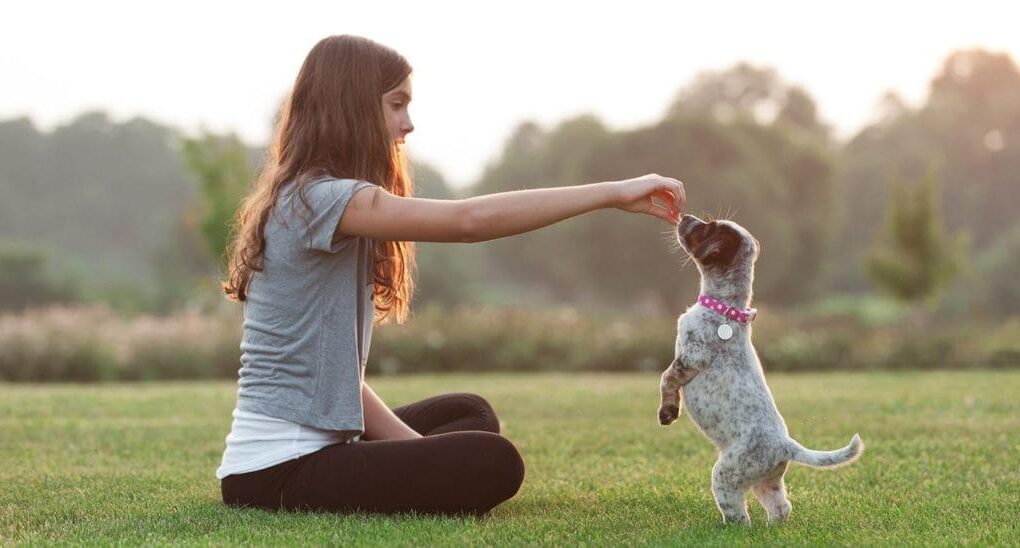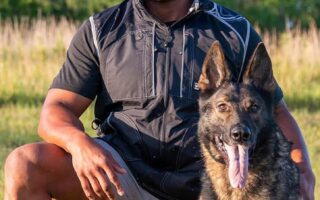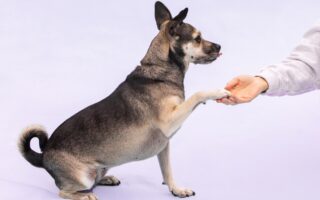How to Keep Your Puppy Grounded: A Guide to Curbing Jumping Behavior
Puppies are bundles of joy, bursting with energy and enthusiasm, often expressing their excitement through playful leaps and bounds. While their eagerness is endearing, those enthusiastic jumps can quickly become overwhelming and even a little unwelcome, especially when your furry friend greets guests with an enthusiastic leap onto their lap or when they launch themselves at you in a moment of pure delight. If you’ve found yourself in the midst of this bouncy behavior, you’re not alone. In this article, we’ll explore effective strategies to help curb your puppy’s jumping tendencies, ensuring that their affectionate nature is channeled into more appropriate greetings and interactions. With a little patience and consistent training, you can teach your pup that all four paws belong firmly on the ground, making for a happier and more harmonious household.
Table of Contents
- Understanding the Roots of Jumping Behavior in Puppies
- Effective Training Techniques to Curb Jumping Instincts
- Creating a Stimulating Environment to Reduce Excess Energy
- Reinforcing Positive Interactions for Lasting Behavior Change
- Q&A
- Final Thoughts
Understanding the Roots of Jumping Behavior in Puppies
Puppies are naturally exuberant creatures, often expressing their excitement through jumping. This behavior originates from a need for social interaction and playfulness, which are crucial for their development. When a puppy leaps up, it may be attempting to engage with its humans or other animals, mimicking behaviors they observed from their mothers or littermates. Understanding this instinctive action can help owners manage and redirect the energy appropriately. Acknowledge that puppies don’t jump to be disobedient; they are simply responding to their instincts and exploring their world.
To cultivate proper behavior and curb excessive jumping, owners can incorporate several strategies that cater to the puppy’s needs while setting boundaries. Here are some effective approaches:
- Consistency in Training: Establish clear rules and stick to them.
- Positive Reinforcement: Reward calm behavior with treats or praise when the puppy remains grounded.
- Redirecting Energy: Use toys or games to channel their excitement into more appropriate activities.
- Socialization: Gradually expose your puppy to new people and environments to help them learn when jumping is acceptable.
By recognizing the reasons behind jumping behavior, owners can work effectively to mitigate it while ensuring their puppies feel secure and loved. Ultimately, this understanding fosters a positive bond between puppy and owner, setting the foundation for a well-mannered adult dog.
Effective Training Techniques to Curb Jumping Instincts
To effectively manage a puppy’s jumping behavior, it is essential to adopt a structured approach that instills calmness and discipline. Begin by teaching the “Sit” command; this not only redirects their energy but also rewards them for remaining grounded. Utilize a combination of positive reinforcement techniques, where treats and praise are given when the puppy complies, and ignore them when they jump. This consistent response helps the puppy associate calm behavior with positive outcomes. Be patient and persistent, as consistency is key in reinforcing this new behavior.
Another effective technique is to create a “greet and retreat” scenario. When guests come to your home, have them wait a few moments before interacting with your puppy. During this time, instruct your puppy to sit and stay. If they jump, have the guests turn their backs without giving any attention. Once the puppy calms down and maintains the sit position, reward them with attention and affection. This approach teaches the puppy that calm behavior leads to positive interactions. To aid in tracking progress, consider using a simple table to outline specific jumping situations and the corresponding training methods used:
| Situation | Training Technique |
|---|---|
| Guests Arriving | Greet and Retreat |
| At the Park | Focus on “Sit” Command |
| During Meals | Ignore Jumping, Reward Calmness |
Creating a Stimulating Environment to Reduce Excess Energy
Creating a space that actively engages your puppy can effectively curtail their excess energy and tendency to jump. Consider incorporating interactive toys that challenge them mentally and physically. Some examples include:
- Puzzle feeders: These encourage your puppy to work for their food, utilizing both their mind and body.
- Kong toys: Fill them with treats or peanut butter to keep your pup occupied for an extended period.
- Agility equipment: Set up a mini obstacle course in your backyard or living room for your puppy to navigate.
In addition to these toys, establishing a routine that incorporates positive reinforcement techniques can foster a calm demeanor. Setting up designated play areas and relaxed zones can help balance energy levels. Consider the following:
| Play Area | Purpose |
|---|---|
| Living Room | Engaging toys and interactive games |
| Backyard | Agility course and fetch games |
| Cuddle Corner | Cozy space for relaxation after playtime |
Reinforcing Positive Interactions for Lasting Behavior Change
Creating an environment that promotes good behavior is essential when teaching your puppy not to jump. Begin by reinforcing calm behaviors when your puppy greets you or guests. Use positive reinforcement techniques to reward your puppy for keeping all four paws on the ground. This can be done with treats, praise, or play, ensuring that your puppy associates calm behavior with positive outcomes. Consistency is key; every member of your household should follow the same approach to avoid confusing your pup.
In addition to rewards, consider incorporating the following methods to enhance your training:
- Ignore jumping: Turn your back and avoid eye contact when your puppy jumps.
- Redirect attention: Offer a toy for your puppy to focus on instead of jumping.
- Practice commands: Teach basic commands like “sit” or “down” as alternatives to jumping.
By combining these strategies, you create a robust framework for long-lasting behavioral change. Recording your puppy’s progress can also help reinforce the positive interactions; here’s a simple table to track improvements:
| Date | Action Taken | Response |
|---|---|---|
| March 1 | Ignored jumping, rewarded sitting | Calmed down quickly |
| March 3 | Redirected with a toy | Engaged with the toy |
| March 5 | Taught “sit” command | Responded with a sit |
Q&A
Q&A: How to Stop Your Puppy from Jumping
Q1: Why does my puppy jump so much?
A: Puppies jump for various reasons! Often, it’s their way of expressing excitement and happiness, especially when they greet their favorite humans. They are naturally curious and energetic, and jumping is an instinctive behavior that helps them engage with their environment. While it’s adorable in small doses, it can become overwhelming if not managed.
Q2: What strategies can I use to discourage jumping?
A: There are several effective techniques to curb your puppy’s jumping habit:
- Ignore the Jumping: When your puppy jumps, turn away and avoid eye contact. Wait until they are calm before giving them attention.
- Use a Sit Command: Teach your puppy to sit before they receive any greetings or treats. This way, jumping is no longer the desired behavior.
- Reinforce Calm Behavior: Consistently reward your puppy when they stand or sit quietly instead of jumping. Positive reinforcement goes a long way!
- Redirect Their Energy: Incorporate play and physical exercise into your puppy’s routine. A well-exercised puppy is less likely to jump out of excitement.
Q3: How can I train my puppy to greet people politely?
A: Training your puppy to greet people politely is all about consistent practice. Here’s a simple method:
- Practice with Friends: Invite friends over and have them help with the training. When your puppy jumps, ask your friend to stand still and ignore the behavior.
- Introduce the “Sit” Command: Before allowing your puppy to greet someone, have them sit. Reward them for staying in the sit position while the person approaches.
- Reinforce with Treats: Keep treats on hand to reward your puppy each time they greet someone calmly. Over time, they will associate polite greetings with pleasant rewards.
Q4: Is there a specific age to start training my puppy not to jump?
A: It’s never too early to start! Puppies can begin learning basic commands and behaviors as early as eight weeks old. However, the earlier you implement consistent training, the easier it will be to shape their behavior as they grow. Training is a lifelong process, so be patient and consistent throughout your pup’s development.
Q5: What if my efforts aren’t working?
A: If you find that your efforts to curb jumping are not yielding results, consider reaching out to a professional dog trainer. They can provide personalized strategies and insights tailored to your puppy’s specific behavior and needs. Remember, every puppy is unique, and sometimes an extra set of eyes can make a world of difference!
Q6: Will my puppy stop jumping on their own as they get older?
A: While some dogs do outgrow excessive jumping as they mature, it’s best not to rely on this alone. If the jumping behavior is not addressed early on, it could become a permanent habit. Consistent training and socialization will help your puppy learn appropriate behaviors that last into adulthood.
By applying patience and consistent training, you can help your puppy learn to greet the world in a more polite manner, ensuring a happier experience for everyone involved!
Final Thoughts
As we wrap up our exploration into the art of curbing your puppy’s exuberant leaps, remember that patience and consistency are your best allies. While those joyful jumps may seem harmless, instilling appropriate boundaries will lead to a more composed companion. Embrace the journey of training, and celebrate each small victory along the way. With time, effort, and love, your puppy will learn to express their excitement in ways that respect both their happiness and your personal space. So, take a deep breath, practice the techniques we’ve discussed, and watch as your furry friend transforms from a boundless jumper into a well-mannered companion. Happy training!



